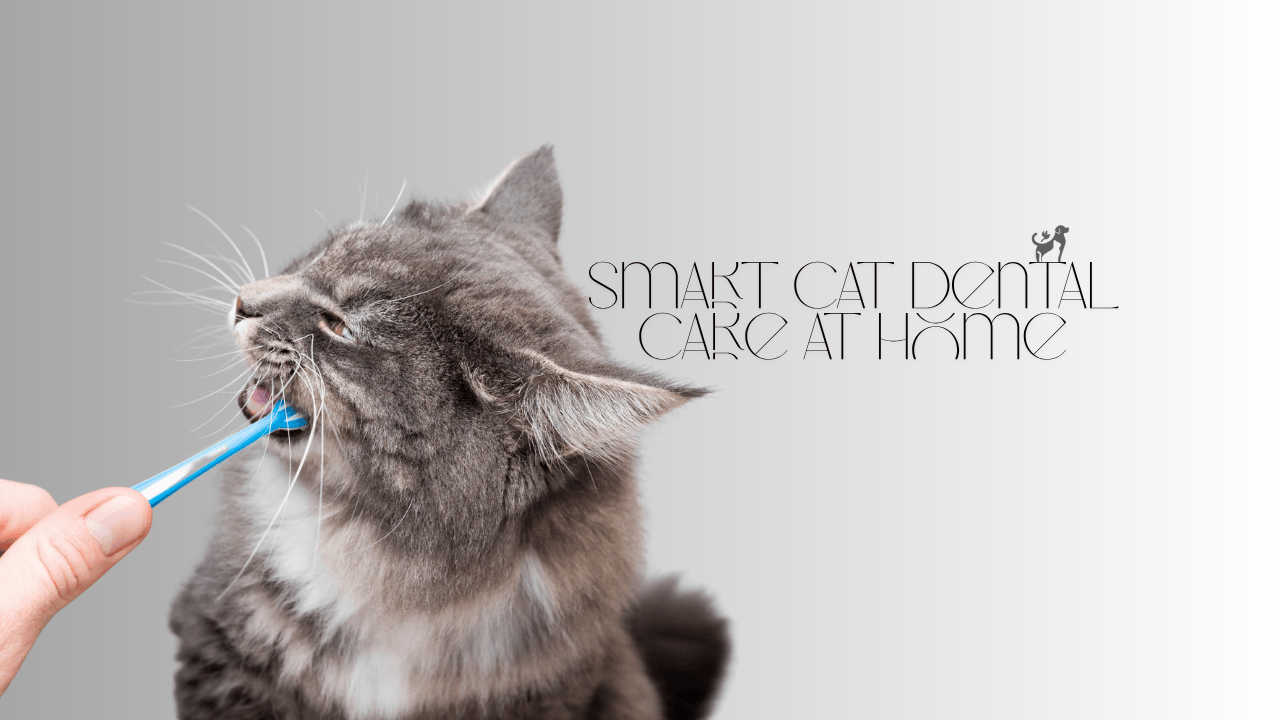Dental health is often overlooked in cats, yet it plays a crucial role in their overall well-being. If you’ve ever caught a whiff of your cat’s fishy breath or noticed they shy away from kibble, there’s a good chance their teeth need attention. The good news? Cat dental care at home can be simple, stress-free, and even enjoyable for both of you.

Why Cat Dental Care Matters
Most pet owners don’t realize how critical dental care is—until it’s too late. Dental disease affects nearly 70% of cats by age 3, according to PetMD. That number is staggering, especially because most of it is preventable.
Untreated dental issues can lead to:
- Painful infections
- Difficulty eating
- Tooth loss
- Even heart, kidney, or liver problems due to bacteria spreading through the bloodstream
Think of dental care as a daily investment in your cat’s long-term health. It’s just as important as feeding high-quality food or regular vet visits.
Common Dental Problems in Cats
Cats can develop a range of dental issues—some minor, others serious. Here are the most common:
1. Periodontal Disease
This is the big one. It starts as plaque and tartar buildup and can lead to gum inflammation, infection, and tooth loss if untreated.
2. Tooth Resorption
A painful condition where the tooth slowly breaks down and is absorbed into the gums. Over 70% of cats over 5 suffer from this condition.
3. Stomatitis
A severe, painful inflammation of the mouth lining. Often requires aggressive treatment, sometimes even full tooth extraction.
4. Gingivitis
This is the earliest sign of trouble—red, swollen gums caused by plaque and bacteria. If caught early, it’s very treatable.
Signs Your Cat Has Dental Issues
Cats are masters at hiding pain, so symptoms can be subtle. Watch for:
- Bad breath (not just “cat food smell”)
- Drooling or pawing at the mouth
- Difficulty chewing or dropping food
- Red or bleeding gums
- Yellow or brown buildup on teeth
- Behavior changes: hiding, grumpiness, less grooming
If you notice any of these, don’t wait. Schedule a vet visit to prevent worsening damage.
Daily and Weekly Cat Dental Care Routine
Good news: You don’t need to be perfect. A few consistent habits can go a long way.
Brushing Your Cat’s Teeth
Yes, you can brush a cat’s teeth—really. It just takes patience.
What you need:
- Cat-safe toothpaste (never use human toothpaste!)
- A soft-bristled cat toothbrush or finger brush
Steps:
- Start slow—let your cat lick the toothpaste off your finger.
- Gradually introduce the brush, touching just a few teeth at first.
- Work up to brushing along the gum line for 30 seconds per side.
Tip: Try brushing after meals or during a calm time of day. Praise and treat afterward to build positive association.
Dental Treats and Toys
Not every cat tolerates brushing, and that’s okay. Dental chews and toys help reduce tartar naturally.
Look for:
- Treats approved by the VOHC (Veterinary Oral Health Council)
- Textured toys that help scrub teeth while they chew
Popular options include Greenies dental treats and rubber chew toys with ridges.
Water Additives & Oral Gels
These are simple to use and good for in-between maintenance:
- Water additives: Just pour into the water bowl daily.
- Oral gels: Apply along the gumline with your finger.
While they’re not as effective as brushing, they help reduce plaque-causing bacteria.
Vet Dental Cleanings: Are They Necessary?
In a word—yes.
Even with great at-home care, your cat needs professional cleanings. These are done under anesthesia so the vet can:
- Remove deep tartar below the gumline
- Check for tooth resorption or infections
- Perform extractions if needed
For most cats, a cleaning once every 1–2 years is ideal. Senior cats or those with known dental issues may need them more often.
Yes, it costs more upfront—but it saves your cat pain (and you thousands) down the line.
How I Manage Dental Care for My Cat Luna
When I first adopted Luna, I didn’t know much about cat dental care. At her first checkup, the vet pointed out minor gingivitis. That was my wake-up call.
Here’s what worked for us:
- I started brushing her teeth three times a week using chicken-flavored toothpaste. She hated it at first, but after a month, she didn’t mind it.
- I switched to dental kibble as part of her meals—Hills t/d has worked well.
- Luna also gets Greenies dental treats every evening. She thinks it’s dessert!
Her last vet visit? Clean teeth and no signs of gingivitis. Trust me—it’s worth it.
Preventive Tips for Lifelong Oral Health
- Start early: Kittens adapt more easily to brushing routines.
- Use proper tools: Avoid human toothpaste or hard brushes.
- Mix methods: Combine brushing, dental food, and treats.
- Annual vet checkups: Let your vet monitor dental health yearly.
- Watch the diet: Wet food alone may increase plaque—balance with dry or dental-specific food.
These simple habits help prevent costly vet visits and ensure your cat lives a pain-free life.
FAQs
How often should I brush my cat’s teeth?
Ideally, daily brushing is best. But even 2–3 times a week can significantly reduce plaque buildup.
What if my cat hates tooth brushing?
Try treats, dental toys, or water additives. Start slow and use positive reinforcement. Some cats may never tolerate brushing, and that’s okay—do what you can.
Are dental cleanings safe for older cats?
Yes, with proper pre-anesthetic screening, dental cleanings are safe even for senior cats. Discuss concerns with your vet—they’ll assess risks versus benefits.
Can bad teeth really affect my cat’s organs?
Absolutely. Oral bacteria can enter the bloodstream and strain the heart, kidneys, and liver. Dental disease is more than just bad breath.
What foods help clean cat teeth?
Dry dental kibbles like Hill’s t/d or Royal Canin Dental are designed to scrub teeth. They’re a great addition to a dental care routine.
Final Thoughts & CTA
Cat dental care doesn’t have to be complicated—but it does need to be consistent. A few simple habits can add years to your cat’s life and prevent painful problems.
Remember: dental health is just as important as food, vaccines, or litter habits.
Share this guide with fellow cat parents and check out Fluffze.com.
Written by Shawn, pet lover & contributor at Fluffze.
Related Articles:
How to Brush a Cat’s Teeth Without Stressing Your Pet
How to Clean a Cat’s Ears Safely at Home
Living with a Blind Cat: Tips for a Safe and Happy Life
Sphynx Cat Health Issues: A Complete Guide





